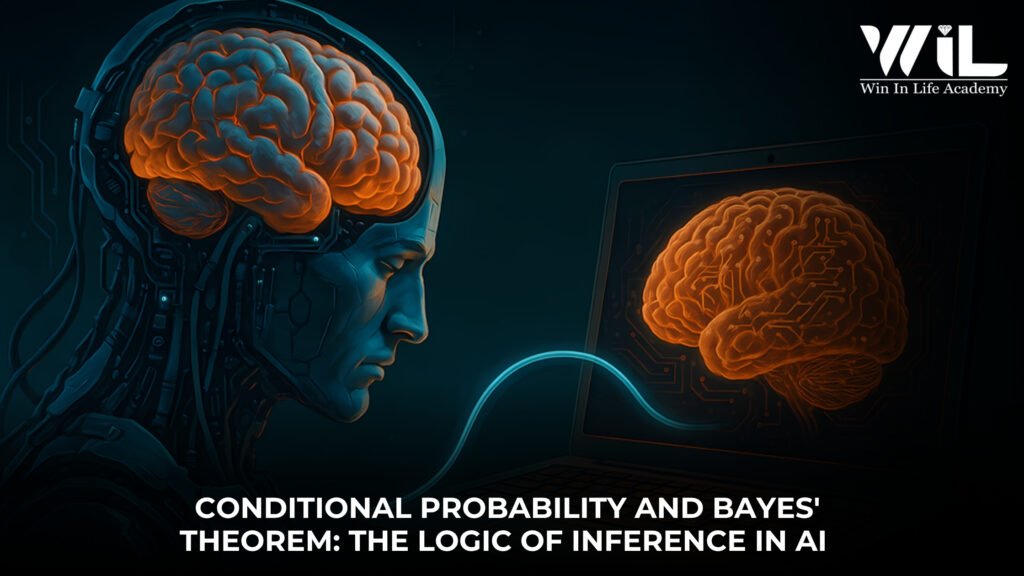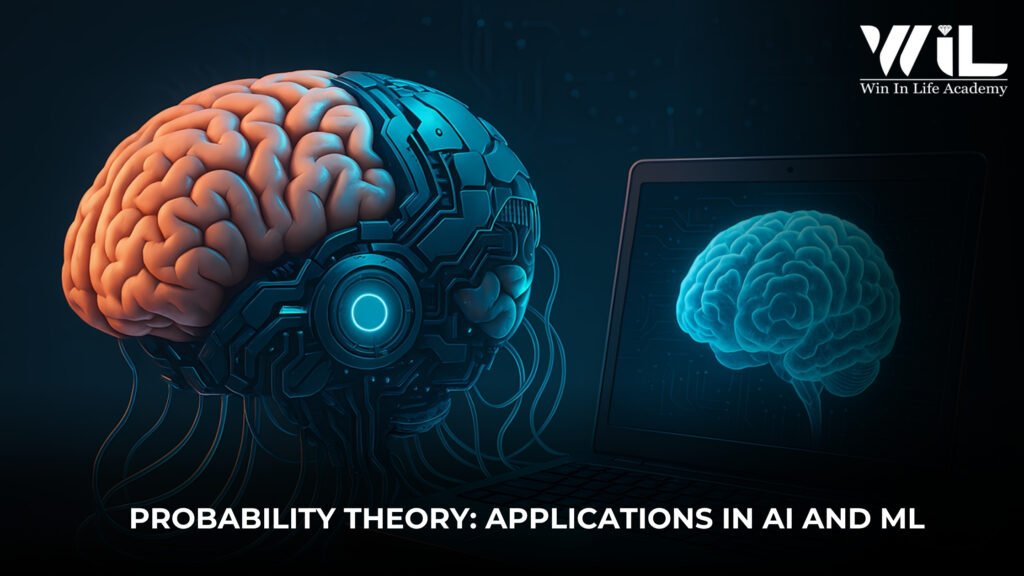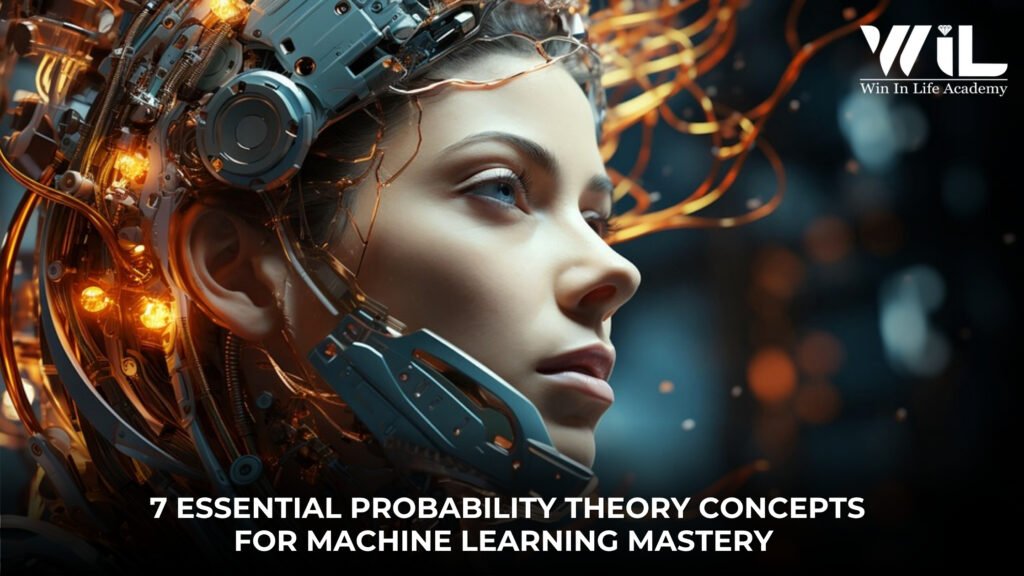In Artificial Intelligence (AI) and Machine Learning (ML), algorithms are no longer just processing data; they are making predictions, recognizing patterns, and even generating new insights. At the core of almost every sophisticated AI model lies a fundamental mathematical discipline: probability theory. Far from being an abstract academic pursuit, probability theory is the bedrock upon which intelligent systems are built, allowing them to quantify uncertainty, make informed decisions, and learn from data.
This comprehensive exploration will delve into the critical aspects of probability theory, illuminating its indispensable role in AI and ML. We will journey from the basic probability theory and statistics to the nuanced concept of probability theory, distinguishing between experimental and theoretical probabilities, and ultimately empowering you with a robust understanding essential for mastering modern AI.
Enroll Now: AI and ML course
The Epistemological Foundation: Concept of Probability Theory
At its essence, the concept of probability theory provides a mathematical framework for quantifying the likelihood of events. It allows us to express numerically how certain we are that a particular outcome will occur. In a world filled with uncertainty, from predicting stock prices to diagnosing diseases, probability offers a powerful tool for reasoning and decision-making.
Historically, probability theory emerged from the study of games of chance in the 17th century, with pioneers like Pascal and Fermat laying the groundwork. However, its applications have since expanded exponentially, infiltrating scientific research, engineering, finance, and, most notably, the realm of AI and ML.
Understanding probability is not just about calculating chances; it’s about formalizing our understanding of uncertainty. This formalization allows computers to mimic human-like reasoning, even when faced with incomplete or noisy data.
Basic Probability Theory and Statistics for Data Scientists

To truly grasp the power of probability in AI, a solid understanding of basic probability theory and statistics is paramount. These foundational elements provide the vocabulary and grammar for interpreting data and building probabilistic models.
Defining Core Terminology: Events, Outcomes, and Sample Space
- Experiment: A procedure or process that produces an outcome. For example, flipping a coin, rolling a die, or observing a customer’s purchase behavior.
- Outcome: A single possible result of an experiment.
- Event: A set of one or more outcomes. For instance, getting “heads” when flipping a coin, rolling an even number on a die, or a customer buying a specific product.
- Sample Space (Ω): The set of all possible outcomes of an experiment. For a single coin flip, Ω= {Heads, Tails}. For rolling a six-sided die, Ω= {1,2,3,4,5,6}.
Axioms of Probability: The Cornerstone Principles
The entire complex of probability theory rests on three fundamental axioms, known as Kolmogorov’s axioms:
- Non-negativity: The probability of any event A is always non-negative: P(A)≥0. This implies that the likelihood cannot be negative.
- Normalization: The probability of the sample space (the certainty of some outcome occurring) is 1: P(Ω)=1. This means the sum of probabilities of all possible outcomes is 1.
- Additivity (for disjoint events): If A and B are mutually exclusive (disjoint) events (meaning they cannot occur simultaneously), then the probability of either A or B occurring is the sum of their individual probabilities: P(A∪B) =P(A)+P(B). This extends to any countable sequence of disjoint events.
Elementary Probability Calculation: Union, Intersection, and Complement
- Union (A∪B): The event that either A or B or both occur. P(A∪B) =P(A)+P(B)−P(A∩B).
- Intersection (A∩B): The event that both A and B occur.
- Complement (Ac or A′): The event that A does not occur. P(Ac)=1−P(A).
These basic operations are crucial for manipulating and understanding complex probabilistic relationships in data.
Experimental and Theoretical Probabilities
In the realm of probability, especially in the context of data-driven fields like AI and ML, it’s vital to distinguish between two primary ways of determining probabilities: experimental and theoretical probabilities.
Theoretical Probability
Theoretical probability is based on logical reasoning and the assumption of equally likely outcomes. It’s calculated by dividing the number of favorable outcomes by the total number of possible outcomes.
P(Event)=Total number of possible outcomes Number of favorable outcomes
Example: When rolling a fair six-sided die, the theoretical probability of rolling a ‘4’ is 1/6, because there is one favorable outcome (rolling a 4) out of six total possible outcomes. The theoretical probability of rolling an even number is 3/6=1/2.
Theoretical probability often serves as a baseline or an expectation in ideal scenarios. It assumes perfect conditions and complete knowledge of the sample space.
Experimental Probability
Experimental probability, also known as empirical probability, is determined by conducting an experiment or observing real-world data. It’s calculated by dividing the number of times an event occurs in a series of trials by the total number of trials.
P(Event)=Total number of trials Number of times the event occurred
Example: If you flip a coin 100 times and it lands on heads 55 times, the experimental probability of getting heads is 55/100=0.55.
The relationship between experimental and theoretical probabilities lies in the Law of Large Numbers. This fundamental theorem states that as the number of trials in an experiment increases, the experimental probability of an event will converge to its theoretical probability. This convergence is precisely what allows machine learning models to learn from vast datasets and approximate underlying true probabilities.
In AI and ML, we predominantly work with experimental probabilities derived from training data. Our models learn from observed patterns and statistical frequencies to make predictions on unseen data, implicitly relying on the assumption that observed frequencies reflect underlying theoretical probabilities.
Conditional Probability and Bayes’ Theorem: The Logic of Inference in AI

Beyond simple probabilities, the ability to update beliefs based on new evidence is crucial for intelligent systems. This is where conditional probability and Bayes’ Theorem become indispensable.
Conditional Probability
Conditional probability quantifies the likelihood of an event occurring given that another event has already occurred. It’s denoted as P(A∣B), read as “the probability of A given B.”
P(A∣B) =P(B)P(A∩B), provided P(B)>0.
Example: What’s the probability that a student gets an ‘A’ in a class, given that they regularly attend lectures? Here, ‘getting an A’ is event A, and ‘regularly attending lectures’ is event B.
Conditional probability is at the heart of many AI applications, from spam filtering (probability of an email being spam given certain words to appear) to medical diagnosis (probability of a disease given a set of symptoms).
Bayes’ Theorem
Bayes’ Theorem is a powerful mathematical formula that describes how to update the probability of a hypothesis based on new evidence. It’s a cornerstone of probabilistic inference and forms the basis of many machine learning algorithms, notably Naive Bayes classifiers.
P(H∣E) =P(E)P(E∣H) ⋅P(H)
Where:
- P(H∣E): The posterior probability of hypothesis H given evidence E. This is what we want to find.
- P(E∣H): The likelihood of observing evidence E given that hypothesis H is true.
- P(H): The prior probability of hypothesis H before observing any evidence.
- P(E): The marginal probability of observing evidence E.
- Example: In medical diagnosis, H could be “patient has a disease,” and E could be “patient tests positive.” Bayes’ Theorem allows doctors (or AI systems) to calculate the probability of a patient having the disease given a positive test result, taking into account the general prevalence of the disease and the accuracy of the test.
Bayes’ Theorem is central to probabilistic graphical models, Bayesian networks, and countless other AI techniques that rely on updating beliefs in the face of uncertainty.
Random Variables and Probability Distributions
To effectively apply probability theory in AI and ML, we need ways to represent and analyze numerical outcomes of random experiments. This is achieved through random variables and their associated probability distributions.
Random Variables
A random variable is a numerical value associated with the outcome of a random experiment. It’s a function that maps outcomes from sample space to real numbers. Random variables can be:
- Discrete Random Variables: Can take on a finite or countably infinite number of distinct values (e.g., the number of heads in 10-coin flips, the number of defects in a batch of products).
- Continuous Random Variables: Can take on any value within a given range (e.g., a person’s height, the temperature of a room).
Probability Distributions
A probability distribution describes how the probabilities are distributed over the possible values of a random variable.
For Discrete Random Variables:
- Probability Mass Function (PMF): P(X=x) gives the probability that a discrete random variable X takes on a specific value x. The sum of all probabilities in a PMF must equal 1.
- Common Distributions: Bernoulli (single trial with two outcomes), Binomial (number of successes in a fixed number of trials), Poisson (number of events in a fixed interval).
- For Continuous Random Variables:
- Probability Density Function (PDF): f(x) describes the relative likelihood for a continuous random variable to take on a given value. The area under the PDF curve over a range gives the probability that the variable falls within that range. The total area under the PDF curve must equal 1.
- Common Distributions: Normal (Gaussian), Uniform, Exponential.
Understanding probability distributions is fundamental for machine learning, as many algorithms assume specific distributions for data (e.g., Gaussian Naive Bayes, linear regression assuming normally distributed errors). Furthermore, many statistical models are built upon these distributions.
Expectation and Variance: Characterizing Random Variables
Beyond simply describing the probability of individual outcomes, we often need to characterize the central tendency and spread of random variables. This is achieved through expectation and variance.
Expectation (Mean): The Average Outcome
The expectation or expected value (E[X]) of a random variable X is the weighted average of all possible values, where the weights are their respective probabilities. It represents the long-run average outcome if the experiment were repeated many times.
- For Discrete X: E[X]=∑x⋅P(X=x)
- For Continuous X: E[X]=∫x⋅f(x)dx
The expected value is crucial in decision-making under uncertainty, cost-benefit analysis, and understanding the average performance of models.
Variance and Standard Deviation: Quantifying Variability
Variance (Var(X) or σ2) measures the spread or dispersion of a random variable’s values around its expected value. A higher variance indicates greater variability.
Var(X)=E[(X−E[X])2]
The standard deviation (σ=Var(X)) is the square root of the variance and is often preferred because it’s in the same units as the random variable itself, making it more interpretable.
Understanding variance and standard deviation is vital for assessing the reliability of predictions, understanding the distribution of errors in a model, and in techniques like Principal Component Analysis (PCA) which rely on capturing data variance.
Probability Theory: Applications in AI and ML

The abstract principles of basic theory of prob ability find concrete and powerful applications across the spectrum of AI and ML.
Machine Learning Algorithms: Built on Probabilistic Principles
Many foundational ML algorithms inherently leverage probability theory:
- Naive Bayes Classifiers: Directly apply Bayes’ Theorem for classification tasks, assuming independence between features given the class.
- Logistic Regression: Models the probability of a binary outcome using a sigmoid function, effectively predicting the likelihood of an event.
- Support Vector Machines (SVMs): While primarily geometric, extensions like Platt scaling incorporate probability for output calibration.
- Decision Trees and Random Forests: Often use information gain, which is rooted in entropy from information theory (a field heavily intertwined with probability).
- Neural Networks: Output layers often use SoftMax functions to produce probability distributions over classes, and training often involves optimizing likelihood functions.
- Hidden Markov Models (HMMs) and Conditional Random Fields (CRFs): Widely used in natural language processing (NLP) and speech recognition, these models are deeply probabilistic modeling sequences of events.
Uncertainty Quantification and Risk Management
Probability theory allows AI systems to quantify their uncertainty about predictions. Instead of simply providing a single prediction, models can output a probability distribution, indicating their confidence. This is critical in:
- Medical Diagnosis: Providing probabilities of different diseases.
- Autonomous Driving: Assessing the probability of collisions or pedestrian detection errors.
- Financial Modeling: Quantifying risk in investment portfolios.
Data Preprocessing and Feature Engineering
Understanding the probabilistic properties of data helps in:
- Missing Value Imputation: Using probabilistic models to estimate missing data points.
- Outlier Detection: Identifying data points that are statistically improbable given the rest of the dataset.
- Feature Scaling and Transformation: Applying transformations (e.g., log transforms for skewed distributions) to make data conform to probabilistic assumptions of models.
Reinforcement Learning
In reinforcement learning, agents learn to make decisions in uncertain environments. Probability theory is essential for:
- Modeling stochastic environments: Where actions do not always lead to predictable outcomes.
- Policy optimization: Maximizing expected rewards over time.
- Exploration-exploitation trade-off: Probabilistically deciding whether to explore new actions or exploit known rewarding actions.
Final Thoughts
The journey through probability theory reveals its undeniable status as the foundational language of AI and ML. From the basic theory of probability and statistics that govern data interpretation to the profound insights derived from experimental and theoretical probabilities, and the inferential power of Bayes’ Theorem, every facet of modern AI success is deeply intertwined with probabilistic reasoning.
Mastering these concepts is not merely an academic exercise; it’s a strategic imperative for anyone aspiring to build, understand, or innovate in the field of AI and Machine Learning. A firm grasp of probability allows you to move beyond superficial understanding, to truly grasp why algorithms work, how to debug them effectively, and how to design more robust and intelligent systems. It empowers you to navigate the inherent uncertainties of real-world data and build models that learn, adapt, and make informed decisions.
Are you ready to elevate your understanding of AI and Machine Learning? Unlock the full potential of your career by mastering the mathematical foundations that underpin intelligent systems. Win in Life Academy Offers comprehensive courses designed to equip you with deep knowledge and practical skills in AI and ML, including a strong emphasis on the essential statistical and probabilistic principles. Visit Win in Life Academy today and take the definitive step towards becoming a leader in the AI revolution!
References
Probability Theory
https://www.geeksforgeeks.org/probability-theory
Probability Theory
https://www.cuemath.com/data/probability-theory
probability theory





